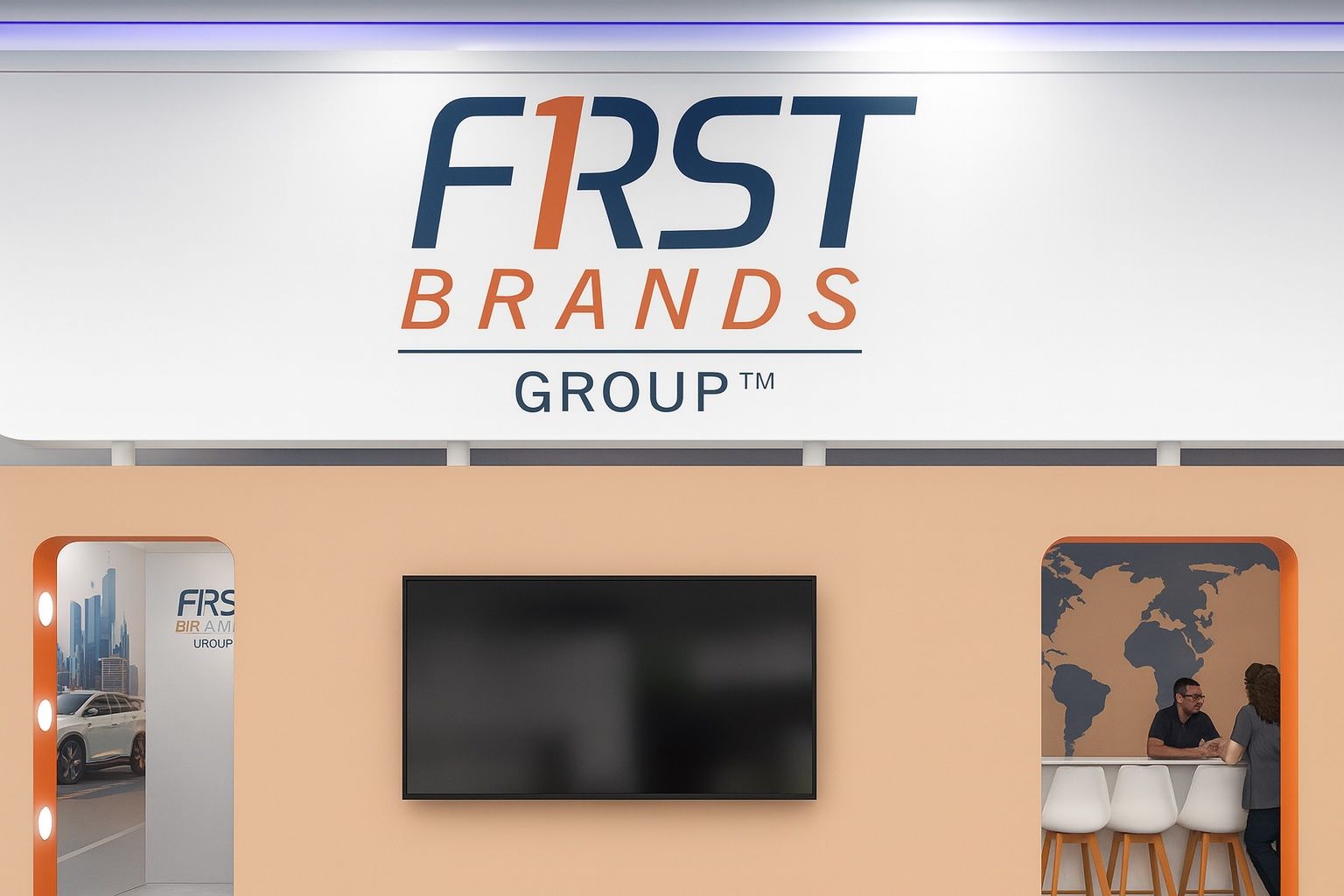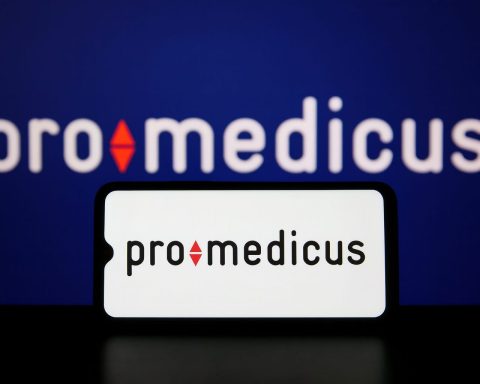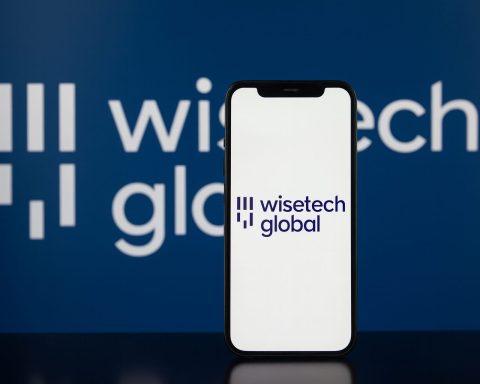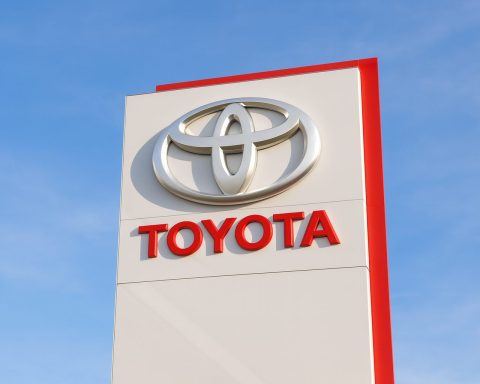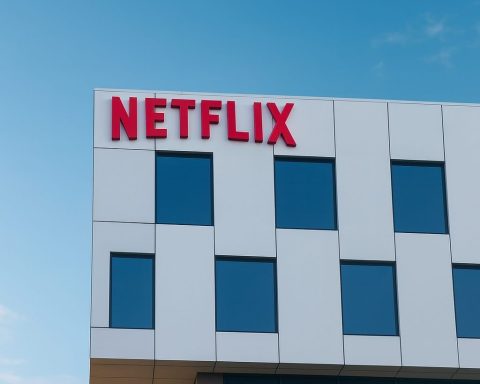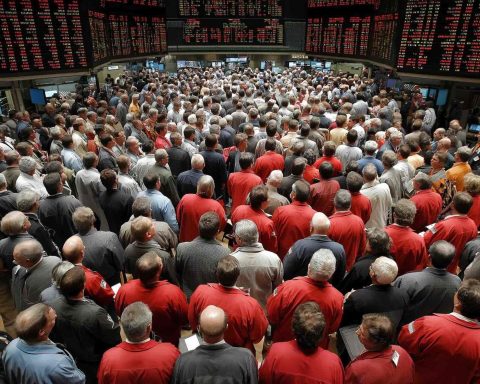- Auto parts giant collapses: First Brands Group – a major U.S. aftermarket auto-parts supplier behind brands like Raybestos brakes, TRICO wipers and FRAM filters – filed for Chapter 11 bankruptcy on Sept. 28, 2025, listing over $10 billion in liabilities [1] [2]. The bankruptcy came after lenders uncovered irregularities in its financial reporting and halted a planned $6 billion refinancing in August [3].
- $2.3 billion “vanished”: Trade-finance creditor Raistone alleges that as much as $2.3 billion is unaccounted for at First Brands [4]. Court filings reveal First Brands had off-balance-sheet financing arrangements(factoring and supply-chain finance) that created a $2.3 billion hole in its balance sheet [5] [6]. An independent board probe is investigating whether invoices were factored multiple times, effectively double-pledging receivables [7] [8]. First Brands’ lawyer admitted to Raistone that the company doesn’t know if it ever received $1.9 billion tied to those invoices – and that $0 remains in the relevant accounts [9] [10].
- Wall Street exposure: The fallout has hit major lenders. Investment bank Jefferies disclosed its asset management arm held $715 million in receivables linked to First Brands’ invoices [11]. Swiss bank UBS said it is exposed on over $500 million tied to First Brands via its investment funds [12]. Dozens of other creditors – from hedge funds to regional banks – also face losses on First Brands’ debt [13]. Jefferies’ stock price tumbled on the news [14], though analysts estimate the bank’s direct losses could be limited to ~$45 million [15].
- Private credit alarm: First Brands’ implosion has rattled debt investors and raised fears about hidden risks in the booming private credit market [16] [17]. The case echoes past trade-finance scandals like Greensill Capital’s 2021 collapse, where supposedly safe invoice deals masked huge risks [18] [19]. “Oftentimes, those financial innovations are being taken advantage of… Sometimes that risk explodes,” warns accounting professor Ben Lourie, referring to complex financing like factoring [20]. Regulators had tightened disclosure rules after Greensill, but many First Brands creditors say they were “left in the dark” until the crash [21] [22].
- Investigations & outlook: Creditors led by Raistone are urging the court to appoint an independent examiner to investigate the “vanished” funds [23]. Federal prosecutors in New York have also opened an early-stage inquiry into the circumstances of First Brands’ collapse (a routine step when massive losses hit investors) [24] [25]. First Brands has secured $1.1 billion in bankruptcy financing to keep operations running and fulfill orders during restructuring [26]. The company hopes to reorganize or find a buyer and emerge from Chapter 11, while creditors negotiate how to recoup their losses [27] [28]. The case underscores the danger of opaque debt deals in a high-rate environment – and has Wall Street bracing for tougher scrutiny of private lending practices ahead.
How a Hidden Financing Scheme Brought Down First Brands
In hindsight, red flags were mounting at First Brands Group well before its spectacular implosion. The Ohio-based auto-parts supplier had become an industry heavyweight by gobbling up rivals with debt-fueled acquisitions, amassing an enormous debt load in the process [29]. By mid-2025, the company’s finances were growing increasingly murky: in August, First Brands abruptly halted a $6 billion refinancing deal after lenders demanded independent audits of its books [30]. Rumors swirled of large off-the-books loans, late supplier payments, and frustrated investors asking to see invoices backing their loans. Yet few outsiders grasped the full picture of the trouble lurking on First Brands’ balance sheet [31].
That changed in late September 2025, when First Brands filed for Chapter 11 bankruptcy protection in the Southern District of Texas [32]. Court filings showed the company had over $10 billion in liabilities (vs. only $1–$10 billion in assets) [33] [34], far more debt than many creditors realized. What caused this massive hole? First Brands disclosed that it had taken on nearly $2.3 billion in off-balance-sheet financing – essentially borrowing cash upfront by pledging future payments it expected from customers [35] [36]. This was done through invoice factoringand related supply-chain finance deals, arranged by fintech intermediaries like Raistone [37] [38]. In theory, such factoring can be a legitimate way to improve cash flow: a company sells its accounts receivable (customer IOUs) to a lender or fund, getting paid immediately while the lender waits for the customer to pay later [39].
But in First Brands’ case, these arrangements went disastrously wrong. According to Raistone – one of the trade-finance firms involved – First Brands “collected roughly $1.9 billion of factored receivables without remitting it to the proper owners” [40] [41]. In other words, First Brands obtained cash by selling its invoices, but when customers (like retailers buying its auto parts) paid those invoices, the funds did not reach the financing parties as intended. It’s as if the same invoice may have been pledged more than once, or the repayments were diverted – a possibility the company’s advisors are now examining [42] [43]. “Under these circumstances – with up to $2.3 billion in assets unaccounted for – the appointment of an examiner… is both mandatory and critical,” Raistone argued in an Oct 8 court filing [44]. The unanswered questions are jaw-dropping: “Do we know whether [First Brands] actually received $1.9 billion…? How much is in the segregated accounts… as of today?” Raistone’s lawyers asked. First Brands’ counsel’s reply was blunt: “#1 – We don’t know; #2 – $0.” [45]
This revelation of vanished funds struck like a thunderbolt. First Brands’ lenders had already suspected something was amiss – the company’s “special committee” of independent directors had begun probing these off-balance-sheet deals and potential double-counting of invoices prior to the bankruptcy [46] [47]. But confirmation of a multi-billion-dollar black hole sent shockwaves through the credit markets. It meant that a huge chunk of First Brands’ debt was potentially backed by nothing – or at least nothing that wasn’t already claimed by someone else. By the time of the bankruptcy filing, First Brands acknowledged an unpaid $2.3 billion hole tied to third-party factoring arrangements [48]. As one restructuring expert told WSJ, it was as if money had “simply vanished” into thin air [49].
Lenders Scramble to Contain the Fallout
First Brands’ implosion has left scores of creditors – from Wall Street banks to niche finance funds – holding the bag. Chief among them is Jefferies Financial Group, the New York investment bank. On Oct 8, Jefferies stunned investors by disclosing that one of its affiliated credit funds had about $715 million in exposure to First Brands’ receivables [50]. That exposure, managed through Jefferies’ Leucadia Asset Management unit, accounts for nearly a quarter of a $3 billion trade finance portfolio run by a Jefferies subsidiary called Point Bonita Capital [51] [52]. Point Bonita had been buying First Brands’ invoices from it and collecting payments from retailers like Walmart, AutoZone, NAPA and O’Reilly Auto – who stock First Brands’ parts – on the fund’s behalf [53] [54]. In theory, this setup should have been low-risk, since major retailerswere the ones ultimately owing the money (and they are highly creditworthy) [55].
In practice, however, Jefferies says First Brands stopped forwarding those retailer payments to Point Bonita as of Sept. 15 [56]. Once First Brands’ cash crunch became severe, the money flow broke down – effectively freezing hundreds of millions in limbo. Two weeks later, First Brands went bankrupt, leaving Jefferies and its fund investors unsure if or when they’ll recover the cash. “We have not yet received any information regarding the results of [First Brands’ internal] investigation,” Jefferies noted, adding that it is working “diligently” with the company’s advisors to assess the impact [57]. Jefferies also said it “intends to exert every effort to protect the interests and enforce the rights of Point Bonita and its investors” [58].
UBS, Europe’s largest bank, has likewise been caught in the First Brands web. UBS revealed it is evaluating losses on more than $500 million tied to First Brands across several of its investment funds [59]. In bankruptcy filings, one of UBS’s hedge fund units (O’Connor Capital) is listed among First Brands’ largest unsecured creditors [60]. Other notable creditors include CIT Group, Nomura, SouthState Bank, and various asset managers – underscoring how widely the exposure was spread [61]. Many of these claims are related to the same supply-chain finance programs facilitated by Raistone and similar firms [62] [63].
The immediate market reaction has been ugly. Jefferies’ stock price plunged as the extent of its entanglement became clear – falling roughly 10–15% over a two-day span [64] [65] (and about 25% down from mid-September levels) as investors digested the news. By Oct 8, Jefferies shares were trading 2% lower in active trading and kept sliding [66] [67]. While $700+ million at risk is significant for Jefferies, analysts noted the bank’s own capital at stake is much smaller. Morgan Stanley estimated Jefferies’ maximum potential loss at only ~$45 million (pre-tax) – because the bank had outside investors financing most of Point Bonita’s portfolio, and any recoveries from retailers would offset losses [68]. That relatively modest loss estimate helped calm some fears. Still, the reputational damage was done. “The exposure could cause a retread of two episodes that contributed to Credit Suisse’s downfall: the collapses of [supply chain lender] Greensill Capital and [hedge fund] Archegos,” observed one industry commentary, drawing parallels to prior debacles [69].
UBS’s stock, meanwhile, saw milder reverberations – $500 million is a drop in the bucket for a bank of UBS’s size, and its exposure is largely through client funds rather than its own balance sheet [70]. However, UBS is scrambling to reassure investors and clients that it has the situation under control. The Swiss bank said it has been examining the First Brands hit and will update the market as needed [71]. Notably, UBS had only months earlier finished absorbing the remains of Credit Suisse (a forced rescue following Greensill and Archegos), so any hint of similar issues is sensitive.
Beyond Jefferies and UBS, many smaller players are bracing for losses. Trade-finance specialist Raistone itself is listed in the bankruptcy as an unsecured creditor for an “undetermined” amount [72]. Hedge funds like Millennium Management reportedly lost money on First Brands’ loans (one fund wrote down ~$100 million) [73]. Some savvy investors had seen trouble coming: at least two credit hedge funds, Apollo Global and Diameter Capital, had placed short bets against First Brands’ debt earlier in the summer – essentially wagering that the loans would drop in value (they later closed those positions, possibly taking profits) [74]. By late September, First Brands’ term loans were indeed trading for pennies on the dollar (first-lien loans plunged to ~30¢ on the dollar, and junior debt below 20¢) [75]. In other words, the market was already signaling a near-total wipeout for debtholders even before the bankruptcy filing.
Murky Trade Finance Deals Under the Microscope
First Brands’ collapse is shining a harsh light on the opaque world of trade finance and private credit. The company’s use of off-balance-sheet financing was supposed to be a form of low-risk financial innovation – a way to get paid quickly for sales without officially taking on “debt” in the traditional sense [76] [77]. Platforms like Raistone pitch themselves as win-win: Companies can “get paid quickly without taking on debt,” while investors are told they’ll earn a decent yield on short-term obligations with “low default rates” and “no mark-to-market risk” [78] [79]. In fact, Raistone’s founder, Dave Skirzenski, once described his firm as “the Amazon Web Services of trade finance” – an intermediary linking companies and investors efficiently [80].
But the First Brands saga shows how this financial engineering can obscure real risks. It is the latest in a string of trade-finance blowups. “The collapse of First Brands is only the most recent instance of a firm like Raistone facilitating apparently low-risk transactions that have led to problems,” Bloomberg noted [81]. In late 2024, another fintech lender, Stenn Technologies, imploded amid accusations of fraudulent invoices and faked clients [82] [83]. And the most infamous case was Greensill Capital in 2021 – a high-profile supply-chain finance firm that filed for insolvency after billions in supposedly safe loans went bad, ultimately contributing to Credit Suisse’s crisis [84] [85]. Greensill had touted the idea that lending against future receivables was ultra-safe, but in reality it was advancing money against mere expected future income, not actual invoices – and much of its lending was concentrated in a few shaky borrowers [86] [87]. When those bets soured, the house of cards collapsed.
Raistone itself has ties to these prior episodes. Skirzenski, Raistone’s CEO, was one of the first employees at Greensill a decade ago (he departed years before Greensill failed) [88]. When Stenn went under last year, Raistone actively courted Stenn’s stranded clients, even offering interest rates as low as 6% to lure them [89] [90]. To be clear, there are no allegations of wrongdoing by Raistone in the First Brands case [91]. But the overlapping personnel and clients underscore how interconnected and potentially fragile this niche financing ecosystem can be.
Critically, these transactions often fall into a regulatory gray zone. Because they aren’t traditional loans or bonds, they can be kept off a company’s balance sheet, making it harder for investors and regulators to track the true debt. “Regulators and accounting experts have sounded alarms for years about the growth of off-balance-sheet financing techniques… cracks can emerge for businesses on shakier financial footing,” reports Bloomberg [92] [93]. After Greensill’s collapse, U.S. accounting rulemakers did force companies to disclose more about supply-chain finance programs starting in 2022 [94]. Yet even with those new rules, many of First Brands’ creditors felt they were left in the dark about the scale of its hidden borrowings [95] [96]. Indeed, First Brands was widely thought to have around $6 billion of debt, but when the dust settled it actually owed over $10 billion – a jaw-dropping discrepancy [97]. The “missing” ~$4 billion was precisely these off-book debts that only came to light in bankruptcy.
Experts say this case highlights how financial innovation can backfire without transparency. “The innovation in trade finance is supposed to be good, but oftentimes those financial innovations are being taken advantage of and companies kind of hide information, take on more risk,” warns Prof. Ben Lourie of UC Irvine’s business school [98]. “Sometimes that risk explodes,” he adds bluntly [99]. First Brands’ use of multiple intermediary financing vehicles (many controlled by its low-profile owner, Patrick James) made it especially hard for outsiders to follow the money [100]. By channeling receivables through special-purpose entities, debt piled up out of sight of traditional metrics and credit ratings. It wasn’t until investors demanded clarity in late September – and First Brands finally opened its books in bankruptcy court – that the true magnitude of its borrowing became clear [101] [102].
Notably, demand for factoring and supply-chain finance has boomed in recent years. An industry group reported that total funds in use for factoring rose 13% from late 2024 to mid 2025 [103], as more companies sought quick cash amid a high interest-rate environment. That suggests many firms are leaning on these techniques to manage cash flow. While there’s nothing inherently wrong with factoring, the First Brands debacle is likely to prompt soul-searching in the private credit industry, which has raised trillions of dollars by lending to companies outside of public markets [104]. Investors will likely demand better disclosure and safeguards to ensure they’re not unknowingly funding another house of mirrors.
Restructuring, Probes, and What Comes Next
For now, First Brands Group is operating under the protective umbrella of Chapter 11 as it attempts to stabilize its business and formulate a turnaround plan. Upon filing bankruptcy, the company secured $1.1 billion in debtor-in-possession (DIP) financing from an ad hoc group of its lenders [105]. This emergency loan, which First Brands says is “fully backstopped,” provides crucial liquidity to keep its factories running, pay employees and vendors, and fulfill customer orders during the court process [106]. First Brands has emphasized that its day-to-day operations continue – its U.S. units are under bankruptcy protection, but international subsidiaries are still operating normally [107]. Auto parts are still shipping to retailers and repair shops, so drivers likely won’t notice an immediate impact on store shelves [108]. Preserving the business’s value as a going concern is a top priority for both management and creditors, since a shutdown liquidation would destroy much more value [109] [110].
Behind the scenes, restructuring advisors from firms like Lazard and Alvarez & Marsal are working to untangle the mess and chart a path forward [111] [112]. There are a few possible outcomes on the table: First Brands could attempt to sell itself (in whole or parts) to a new owner, or it could negotiate a debt-for-equity swap where creditors agree to reduce the debt in exchange for ownership stakes in a reorganized company [113]. Given the company’s valuable brands and market position in the automotive aftermarket, there may be interested buyers or investors willing to step in – if the financing quagmire can be resolved. “First Brands is a great company with a bad balance sheet,” quipped Marathon Asset Management’s Bruce Richards, suggesting the underlying business could thrive once relieved of its crippling debt load [114]. Any restructuring plan will likely aim to preserve the core business and jobs, while cutting down the debt to a sustainable level [115].
In the meantime, the hunt for answers (and accountability) has begun. At First Brands’ behest, a special committee of independent board members was set up to dig into the company’s financing practices – specifically, to determine how $2.3 billion in off-book arrangements were used and whether assets were pledged more than once [116]. But given the magnitude of the losses, outside creditors are not content to let the company investigate itself. Raistone and other creditors have formally petitioned the bankruptcy judge to appoint an independent examiner, an outside investigator who would conduct a thorough, court-supervised probe of what went wrong [117]. If approved, an examiner would sift through emails, contracts, and records to find out where the money went – and whether any fraud or misconduct occurred. This could potentially lead to legal claims against insiders or third parties if they’re found to have siphoned funds or misled lenders, though no such allegations have been proven yet.
In fact, the situation has drawn the attention of the U.S. Department of Justice. Federal prosecutors in Manhattan (known for handling major white-collar cases) have launched an inquiry into First Brands’ collapse, according to a source familiar with the matter [118]. The DOJ’s probe is described as a preliminary fact-finding mission – a common step when a company’s failure inflicts large losses on investors [119]. As of early October, the inquiry is in early stages and “no evidence of wrongdoing has been established so far,” the source told Reuters [120]. There’s no guarantee it will escalate into a full investigation or charges [121]. However, prosecutors will be keen to examine whether misrepresentations or fraud played any role in the missing $2.3 billion. The Justice Department declined to comment, and First Brands said it would cooperate but otherwise declined comment on legal matters [122] [123].
For creditors holding billions in claims, the road ahead will be rocky. First Brands’ official committee of unsecured creditors – which notably includes Raistone – will play a key role in the bankruptcy proceedings, representing all lenders who lack collateral [124]. They will push to maximize recoveries, whether by pursuing asset sales or legal claims. However, given the huge debt pile and missing assets, recoveries could be slim. Many First Brands lenders, especially those in the off-balance-sheet programs, will likely have to write off substantial losses. Trade-finance claims worth hundreds of millions may recover only cents on the dollar unless the mystery money can be traced and recovered.
Broader Implications: Caution Flags in Private Debt
The stunning downfall of First Brands is already prompting wider reverberations in the financial world. For investors in the $1.5 trillion private credit market, it’s a wake-up call that even “asset-backed” loans can harbor nasty surprises. “Financial troubles at [First Brands], coupled with the recent bankruptcy of subprime auto lender Tricolor Holdings, have rattled debt investors and stoked fears of broader stress in corporate debt markets,” note bondholders and bankruptcy experts [125] [126]. With interest rates at their highest in decades, highly leveraged companies in various industries are feeling the squeeze, and credit conditions are tightening. The First Brands saga may lead lenders to scrutinize their portfolios for similar off-book exposure and demand more transparency from borrowers.
That said, there are also voices urging perspective. Fitch Ratings, which downgraded First Brands to junk status days before its bankruptcy [127] [128], believes this collapse is fairly idiosyncratic and “has limited implications for direct lending.” [129] According to Fitch, First Brands’ debt troubles largely stemmed from those “billions of dollars in off-balance-sheet financing” via factoring and reverse-factoring deals [130] – arrangements that, while sometimes lumped under “private credit,” are distinct from traditional direct loans that are on a borrower’s balance sheet and secured by all its assets [131]. In fact, Fitch points out that most of First Brands’ on-book debt was in the form of broadly syndicated loans (BSLs) – nearly $5 billion of first-lien and over $500 million of second-lien loans underwritten by banks and distributed to many investors [132]. The impact on those mainstream credit instruments, like CLOs (collateralized loan obligations) holding First Brands loans, is minimal – median exposure across hundreds of CLOs is well under 1% of assets [133]. In short, no single bank or fund (outside the trade-finance deals) was overexposed to First Brands’ default in the way that could trigger a chain reaction. Fitch essentially views First Brands as a cautionary tale of aggressive and opaque financing, rather than a sign that the broader private credit boom is cracking.
Still, the reputational fallout for Wall Street firms involved is real. Jefferies, for one, faces questions about why it financed so much of First Brands’ receivables and whether it properly disclosed the risks (the Financial Times reported that Jefferies earned undisclosed fees on the First Brands financing deals) [134] [135]. UBS is reportedly reviewing how a single fund ended up with 30% of its portfolio tied to First Brands – a concentration that seems imprudent in hindsight [136]. Regulators may also take a closer look: both the U.S. Securities and Exchange Commission (SEC) and banking supervisors have been warning about hidden leverage and illiquidity in private credit. First Brands’ collapse could spur efforts to ensure investors are aware of off-book exposures. For example, more rigorous accounting disclosures for factoring and supply-chain finance (beyond what was implemented post-Greensill) might be considered, so that lenders can’t so easily accumulate debt off the balance sheet.
Ultimately, First Brands Group’s fate will unfold in the bankruptcy court over the coming months. Creditors will joust over the scraps, investigators will chase the missing money, and perhaps a restructured First Brands will emerge under new ownership. In the best case, the company’s valuable brands and operations find a stable footing, and lessons learned from this debacle lead to greater transparency in corporate finance. For now, though, First Brands stands as a stark reminder that even “boring” industries like auto parts can harbor exotic financial risks beneath the surface – risks that can erupt to rock investors, lenders, and markets when the music stops.
Sources: Coverage by Reuters [137] [138] and Bloomberg [139] [140]; court filings and analysis via Tech Space 2.0 [141] [142]; expert commentary from Fitch Ratings [143] and academia [144]; Banking Dive and Financial Times reports on Jefferies/UBS exposures [145] [146]. All information is current as of October 10, 2025.
References
1. www.reuters.com, 2. ts2.tech, 3. ts2.tech, 4. www.reuters.com, 5. www.reuters.com, 6. www.reuters.com, 7. www.reuters.com, 8. www.reuters.com, 9. www.reuters.com, 10. www.reuters.com, 11. www.reuters.com, 12. www.reuters.com, 13. ts2.tech, 14. www.reuters.com, 15. www.reuters.com, 16. www.reuters.com, 17. www.reuters.com, 18. www.livemint.com, 19. www.livemint.com, 20. www.livemint.com, 21. www.livemint.com, 22. www.livemint.com, 23. www.reuters.com, 24. www.reuters.com, 25. www.reuters.com, 26. ts2.tech, 27. ts2.tech, 28. ts2.tech, 29. www.reuters.com, 30. ts2.tech, 31. www.bloomberg.com, 32. ts2.tech, 33. ts2.tech, 34. www.livemint.com, 35. www.reuters.com, 36. www.livemint.com, 37. www.livemint.com, 38. www.livemint.com, 39. www.reuters.com, 40. www.reuters.com, 41. www.reuters.com, 42. www.reuters.com, 43. www.reuters.com, 44. www.reuters.com, 45. www.reuters.com, 46. www.reuters.com, 47. www.reuters.com, 48. www.reuters.com, 49. www.bloomberg.com, 50. www.reuters.com, 51. www.bankingdive.com, 52. www.bankingdive.com, 53. www.bankingdive.com, 54. www.bankingdive.com, 55. www.bankingdive.com, 56. www.reuters.com, 57. www.bankingdive.com, 58. www.bankingdive.com, 59. www.reuters.com, 60. ts2.tech, 61. ts2.tech, 62. www.livemint.com, 63. www.livemint.com, 64. stockanalysis.com, 65. stockanalysis.com, 66. www.reuters.com, 67. www.reuters.com, 68. www.reuters.com, 69. www.bankingdive.com, 70. www.afr.com, 71. www.reuters.com, 72. www.livemint.com, 73. ts2.tech, 74. ts2.tech, 75. ts2.tech, 76. www.livemint.com, 77. www.livemint.com, 78. www.livemint.com, 79. www.livemint.com, 80. www.livemint.com, 81. www.livemint.com, 82. www.livemint.com, 83. www.livemint.com, 84. www.livemint.com, 85. www.livemint.com, 86. www.livemint.com, 87. www.livemint.com, 88. www.livemint.com, 89. www.livemint.com, 90. www.livemint.com, 91. www.livemint.com, 92. www.livemint.com, 93. www.livemint.com, 94. www.livemint.com, 95. www.livemint.com, 96. www.livemint.com, 97. www.livemint.com, 98. www.livemint.com, 99. www.livemint.com, 100. www.livemint.com, 101. www.livemint.com, 102. www.livemint.com, 103. www.livemint.com, 104. www.youtube.com, 105. ts2.tech, 106. ts2.tech, 107. ts2.tech, 108. ts2.tech, 109. ts2.tech, 110. ts2.tech, 111. ts2.tech, 112. ts2.tech, 113. ts2.tech, 114. finance.yahoo.com, 115. ts2.tech, 116. www.reuters.com, 117. www.reuters.com, 118. www.reuters.com, 119. www.reuters.com, 120. www.reuters.com, 121. www.reuters.com, 122. www.reuters.com, 123. www.reuters.com, 124. news.bloomberglaw.com, 125. www.reuters.com, 126. www.reuters.com, 127. alternativecreditinvestor.com, 128. alternativecreditinvestor.com, 129. alternativecreditinvestor.com, 130. alternativecreditinvestor.com, 131. alternativecreditinvestor.com, 132. alternativecreditinvestor.com, 133. alternativecreditinvestor.com, 134. www.bankingdive.com, 135. www.bankingdive.com, 136. www.ft.com, 137. www.reuters.com, 138. www.reuters.com, 139. www.livemint.com, 140. www.livemint.com, 141. ts2.tech, 142. ts2.tech, 143. alternativecreditinvestor.com, 144. www.livemint.com, 145. www.reuters.com, 146. www.bankingdive.com
